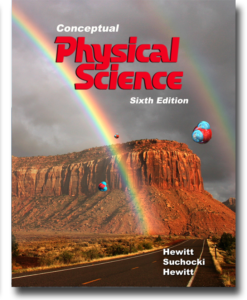
Astronomy
Presented by John Suchocki, our astronomy course uses select physics, chemistry, and astronomy chapters from the Conceptual Physical Science textbook and takes advantage of the numerous, in-depth, and up-to-date astronomy video lessons. This is our lightest course (0.5 cr). We recommend this course as a summer course.
A Homeschool Planet automated planner is now available for this astronomy course. The PDF version of this planner is also included within the course as well as here at LearnScience.Academy.
Conceptual Astronomy, CPS Customized (Grades 9+) (Price: $95)(Sale: $76)
To Purchase:
1. Copy this Course ID: CAS
2. Paste the Course ID into Conceptual Academy’s registration page.
Customized Version (27 weeks)

Textbook: Conceptual Physical Science, 6e (CPS6e) Sold separately
Review a .pdf of the front matter of this textbook, including its table of contents. Here is a link to several sample pages from a chapter section on galaxies: AstronomySample.
An introduction to the basic concepts of astronomy based upon chapters from our upper level Physical Science textbook. This course begins with an exploration of our solar system, followed by a study of the laws of motion and gravity as described by Newton. We then dig deeper into the atomic nucleus, which sets the stage for understanding the nature of stars, black holes, and galaxies. We conclude with the big picture of the universe with a focus on Big Bang theory, cosmic inflation, Einstein’s relativity, and more recent discoveries such as dark matter and energy. Along with video lessons and reading assignments, this course includes study advice from the authors, worksheets, simulations, automated quizzes, unit exams, and labs that can be completed with commonly available materials. Binoculars are highly recommended. This is our shortest course. The Homeschool Planet planner calls for 27 weeks at a relatively slow pace. This pace, however, can easily be picked up to make for a single semester or summer session, which is good for high school seniors. For younger students, this course can server as a foundation to our high school level Conceptual Physics or Conceptual Chemistry honor courses. To learn more about Conceptual Astronomy, download its teacher’s manual:
Conceptual Astronomy, Teacher’s Manual
6 Units: 26 Modules
Unit A: The Solar System
Unit B: Newton’s Laws
Unit C: Gravity and Satellites
Unit D: The Atomic Nucleus
Unit E: Stars and Galaxies
Unit F: The Universe
Sample Astronomy Video: Speed of Light

“I’m the chemistry and astronomy author of our textbooks. So what do chemistry and astronomy have in common? EVERYTHING! Where do elements come from? Stars! Where does most all our energy comes from? Stars! Which two fields of science explore the extreme sizes? Answer: Chemistry and Astronomy, both essential to understanding our place in this universe.”

